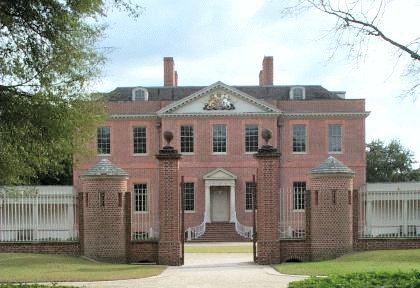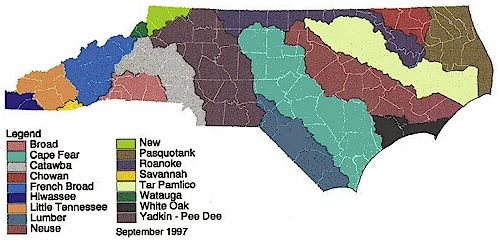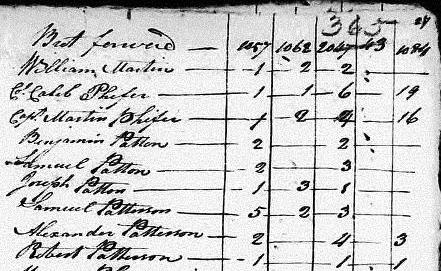Some of Robert Patterson's Family
were Loyalists (Tories) During the Revolution
Robert and Sarah's family
seems to have had their share of family divisions, as many families
do it seems. In their case, one such division appears to have
been over issues concerning the Revolution in the mid 1770's.
Without going into too many details here, it seems that Robert
and his sons Robert Jr. and Peter must have shared common convictions.
Both of these sons were named as executors of the Will, and both
resided in York Co. longer than the rest of their siblings, especially
Peter.
On the other hand, Thomas
Patterson (the oldest son) and apparently William also, were
among those who supported the Loyalists, or Tories, during the
Revolution. They were not alone. All three of their brothers-in-law
were Loyalists, or at least neutral, depending on the source.
Joseph Black (married Sarah Patterson), Daniel Ponder Jr. (married
Elizabeth Patterson), and John Black (married Lydia Patterson)
were among those who were not on the side of the Revolutionaries.
Another close neighbor (and probably relative), Nathaniel Harrison,
was another Loyalist. Practically the entire Black family (of
CFBC) was on the side of the Tories (Loyalists), or at least
claimed to be neutral.
The following list of
Tories from York Co., SC was provided by Harald Reksten, entitled,
"COL. WILLIAM BRATTON'S LIST OF TORIES IN THE REVOLUTION,
26 JULY 1783":
Peeter Juland
Jr. [Julian]
Benjamin Juland
Peeter Juland
Wm. Juland
Daniel Ponder
Jary Juland
Robert Black
James Irvin
Wm. Patterson
Josaph Black
Thomas Peeterson
John Black
Mathew Black
The Julians, Blacks,
Ponders, and Pattersons intermarried frequently during the 1700's.
It is possible that this "James Irvin" may also have
been a relative of theirs. This was neither an all-inclusive
list of those who were Loyalists, nor was everyone on this list
actually in support of the British. Some of these individuals
actually signed an "Oath of Neutrality". The following
extract is from an article that was written by Betty Jo Hulse,
a long-time researcher of the Harrison family. Notice first that
the identity of the Harrisons is established, followed by the
Oath of Neutrality record. Nathaniel Harrison was the same person
who was a testator (witness) to the 1775 Will of Robert Patterson.
His wife was Rachel, and his son, Joseph Harrison. The Matthew
Black recorded below (1785 and 1788) was not the Matthew Black
who had received a land grant on Clark's Fork of Bullocks Creek
in the 1760's, but rather a son or grand son of the elder Matthew.
Some researchers believe the younger was a grandson of the elder
Matthew, by the elder's son Robert Black (and Madge Cravens).
In the Rutherford Co.,
NC court records there is a record showing that Joseph Harrison
and Rachel Harrison sold 140 acres of land lying in York Co.,
SC on both sides of Clarks Fork of Bullocks Creek to Matthew
Black, dated 29 July 1785, being the land granted to Nathaniel
Harrison in the year 1762. In York Co., SC court records there
is recorded the same transaction, only naming Joseph Harrison
and his mother Rachel as selling the same land to Matthew Black,
land that was granted to Nathaniel Harrison in 1762. In October
Court, 1788, York Co., SC there is a record of Joseph Harrison
vs Matthew Black, something to do with "debt" and was
"dismissed at the defendants cost."
In 1762, when Nathaniel
Harrison received his land grant, No 371 Book 23, page 150, in
Mechlinburg Co., the line between North Carolina and South Carolina
was not yet laid out as it is today ...in 1772 it was surveyed
west of the Catawba River, having been surveyed east in 1764.
Before these surveys, there were over 1,000 land grants issued
by North Carolina in territory that is now South Carolina. These
grants were issued from North Carolina counties (present) Bladen,
Anson, Mechlenburg, and Tryon. That is why Nathaniel Harrison's
grant was recorded in Mechlenburg, when it was in reality in
what is now York Co., SC. His land was surveyed 28 Aug 1765 with
W. Sims as surveyor, Thomas Harrison and Robert Black as chain
bearers. It was entered on record Oct. 26, 1767.
Oath of Neutrality transmitted
by Capt. Polk [Ezekiel Polk] New Acquisition, South Carolina...
Robert Black, Joseph Black, William Wilson, Daniel Ponder, NATHANIEL
HARRISON, John Black, Jacob Garner, James Black came before me
and voluntarily made Oath that they will not (unless compelled
in self defense) lift arms against the Americans in their present
contest with Great Britain nor do anything by work or action
which they shall know to be against the American cause. Sworn
before me this 3d of October 1775
Robert Black
Daniel Ponder
Jacob Gerdner
James Black
Joseph Black
Nathaniel Harrison
John Black
William Wilson
Endorsed: 5 Neutral affidavits.
In a book, Biographical
Sketches of American Loyalists, Vol. II, by Lorenzo Sobine,
on page 526: Carolina Loyalists. Nathaniel, estate confiscated.
There is no further record
of Nathaniel Harrison of York Co., SC after 1782 when his name
appears on the confiscation list.
Three of those listed
above were sons-in-law of Robert and Sarah Patterson (Daniel
Ponder, Joseph and John Black).
In contrast, it appears
the Cravens were in favor of revolting. Robert and Esther Harrison
Cravens never actually lived on CFBC. They had retained their
residence in Augusta Co., VA. His brother, William Cravens, had
lived on CFBC from about 1766 until 1773. With the Revolution
looming ahead, perhaps Cravens determined to return to his home
land in Augusta Co., although this writer believes that in doing
so he left part of his family in SC. No records have been found
concerning any daughters born to William Cravens, but it's conceivable
that there may have been one or more daughters that married some
of these young boys who had moved south in the 1760's, from families
such as the Pattersons, or Blacks, or Harrisons, etc. Remember
that Thomas Patterson (a likely candidate to be a son-in-law
of William Cravens) was the grandfather of a Joseph Black Patterson,
and a great-grandfather of two Joseph Black Pattersons and a
William Cravens Patterson. They had those names for a reason.
Nonetheless, no EVIDENCE has been uncovered to prove any such
THEORY.
|









